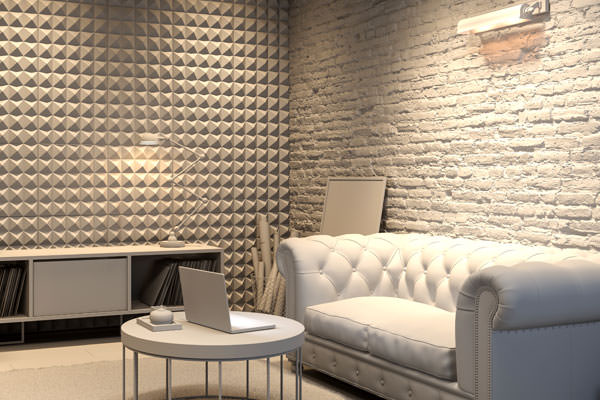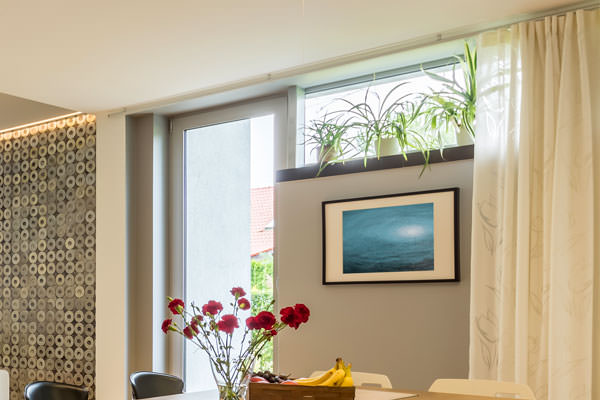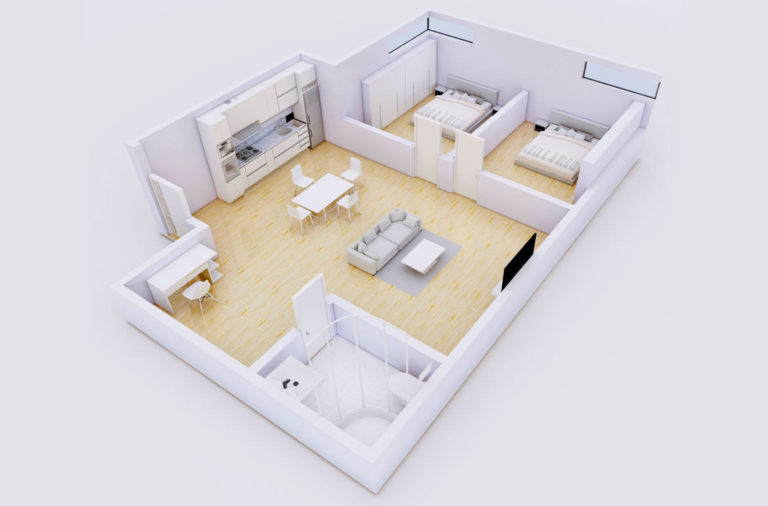
Soundproofing is often overlooked when designing and building your granny flat, but it is highly important to consider. So, how can you best soundproof your granny flat?
Soundproofing begins with your design, by placing the secondary dwelling as far away as possible from the primary dwelling. You should also think about where you are going to put the windows in the granny flat – the less windows facing the primary dwelling the better. Then, consider the materials you are going to use – for the exterior, the insulation, and more. Finally, you can use soundproofing barriers both outside and inside the granny flat to help reduce the noise.
Today I will cover how to best incorporate all of this into your design, the best materials to use for soundproofing, and what these will cost you.
DON'T PAY A FORTUNE FOR YOUR GRANNY FLAT. Find out how to deal with council and build a granny flat for the lowest cost possible. Learn More.

Soundproofing your granny flat means using a variety of materials described below
Let’s get started, so you can begin building a fully soundproofed granny flat.
What Should be Considered in Your Initial Design
One of the main things to consider when designing your granny flat is that it should be kept as far away from your main home as it possibly can. Why? Well, the more distance separating your two dwellings, the less noise that will be circulated between them.
I understand this can be difficult, as it does depend on the size of your property. But I do suggest that you place your granny flat as close to your back fence as you’re allowed.
Keep in mind it is a regulation that your granny flat must be a minimum of 3m from the boundary line of a back fence. Also, if you intend on building your granny flat over a certain height (this varies depending on your local Council), you will have to increase this distance from the back fence.
For example, as I built my granny flat on piers, it’s much taller than your standard dwelling that is built on a concrete slab. As such, it had to be more than 6m from my back fence.
So, when you have you are ready to apply for Complying Development (CDC) or a Development Application (DA) and you have your building plans ready, approach your local Council with your granny flat as close to your back fence as possible.
I also strongly recommend speaking to your neighbours before starting anything, to ensure they do not feel discomforted by your build. Your granny flat is going to be unchangeable once it is built.
For a CDC (Complying Development Certificate) you don’t need to tell your neighbours. But I recommend talking to them, so you don’t cause any issues once building starts.
Still having trouble placing your granny flat close to your back fence? You could always consider obtaining permission from your local Council to build a higher fence.
Now, other factors you can integrate into your design that assist with soundproofing are listed below.
Face your granny flat towards your back fence, rather than your garden, especially if you are planning on attaching an outdoor area, such as a patio, onto your granny flat. This way, you will not be facing each other when sitting outdoors, so you will hear less of each other.
Next, consider where you are placing your windows. If you keep the number of windows that face the main home to a minimum, less noise from the primary dwelling will enter the secondary dwelling.

Where your granny flat windows face will make all the difference
Instead, you could double-glaze these windows, but this can be expensive. I will discuss this price under the sub-heading “What Are the Costs for These Materials?”.
Though you may already have an idea in mind of what you wish to achieve, it can help to hire a professional, such as an architect, to help with your design. They can make sure you leave a decent amount of space between the dwellings.
What Materials Best Soundproof a Granny Flat?
There are a few materials you can use when building your granny flat that will keep it better soundproofed.
For the external facade, the best materials for soundproofing are to build your dwelling from brick or concrete blocks. Though, it is important to think about whether the look of these will suit your surrounding property.
They are also more costly. I will discuss this under the next sub-heading.
When it comes to insulation, a great material to use is acoustically insulated batts (loosely packed fibre). When placed within the walls these provide a fantastic level of sound absorption, reducing noise and sound vibrations by up to as much as 75%.
Just ensure you install the batts prior to the plastering is performed.
Internally, acoustic plasterboard sheets are designed to provide acoustic separation between attached dwellings. They can be used in your walls and ceilings.
You can also double-glaze your windows. However, this can be very expensive, as I will discuss below.
If you can use two or more of these materials, your granny flat will be excellently soundproofed.
What are the Costs for these Materials?
As I have mentioned, some of the materials used for soundproofing can be more costly than your ‘normal’ materials. Just how much more? Well, let’s get into that. You may find that for the level of soundproofing they provide, it is worth every cent.
As this table I found shows, depending on your level of finish, the cost of constructing a 3-bedroom weatherboard home can vary from $1398 – $1935 per square metre. Constructing the same home with a brick veneer can cost anywhere from $1490 – $1980+
However, if you choose to use brick or concrete blocks, I suggest you get at least 3 quotes. You can also read about how to negotiate with your builder on this post I wrote.
When it comes to acoustically insulated batts, these are only slightly more costly than ‘regular’ ones. You can view this acoustic one from Bunnings, and then compare it to the price of their full range of batts, including their ‘normal’ ones.
You have a choice of some different acoustic plasterboard sheets – Fyrechek has a good rating and is less expensive than the alternative, Soundcheck. A ‘normal’ range of Gyprock plasterboards (i.e., those that do not offer acoustic solutions), and their price can be seen here.
Now, double-glazing windows is the most expensive of all soundproofing methods. For example, fitting Magnetite on a sliding door window might cost you more than $5000. In fact my mum had them quote for a stacker door in a Studio apartment in Newtown, NSW and the quote was over $6,000.
More, less costly methods include to fit on a secondary item when the build has finished, or instead to use soundproof curtains.
What Can You do Outside the Secondary Dwelling to Minimise Noise?
The space between your secondary and primary dwelling can be used in many ways to minimise the noise that flows between the two dwellings.
Below are some great hints for soundproofing this area:
- Leave existing barriers – Any barriers that are already in place, such as garages, sheds, trees, or fences, can be left where they already are. This is an ideal method to use if you can, as it will cost you absolutely nothing.
- Create new barriers – If you can put up a fence, plant a tree, place a brick facade and leave a distance of 5 metres or more between the two dwellings, you will achieve excellent soundproofing. For example, put up a divider, install a colorbond fence, and a landscaped garden.
Feel free to read my post “Granny Flat Privacy & Separation – We Breakdown the Rules”. This will give you more ideas on how to soundproof your granny flat from the outdoors, such as the best shrubs you can use.
What Materials Can You Use Within the Granny Flat to Help?
You can also use many materials inside your granny flat to help soundproof it. Below I have listed things that you can put inside your granny flat that will prevent noise from outside making its’ way in:
- Perforated acoustic panels – These are highly efficient at absorbing low frequency sounds. They come in many different materials, such as plaster and plywood, so you can find one that suits your needs.
- Timber battens – Wood is one of the most effective, natural building materials you can use to block sound waves. Using timber as ceiling beams not only looks lovely, it also absorbs noise. You can use them on your walls, ceiling, or even as room dividers.
- Wallpaper – The lush textural surface of wallpaper diffuses sound. It comes in all different types of colours and patterns, so you will easily be able to find to suit your style.
- Acoustic wall art – Acoustic art helps remove noise or reverberation from rooms, as an acoustic panel is added to the image.
- Floor mats – One of the most well-known tricks of soundproofing is putting a thick, textured mat on your floor to help diffuse the noise. The lusher and shaggier the mat is the better, so try to opt for a natural fibre such as wool or hide.
- Upholstered furniture – Upholstered chairs, napkins, placemats and table runners all help. Even swapping any glass furniture for timber can absorb noise.
Conclusion
I hope this has inspired you to build a granny flat with enhanced soundproofing, offering better privacy and comfort for your occupants.
If you’re ready to start building a more appealing granny flat, find out more about DIY’ing your build here.












